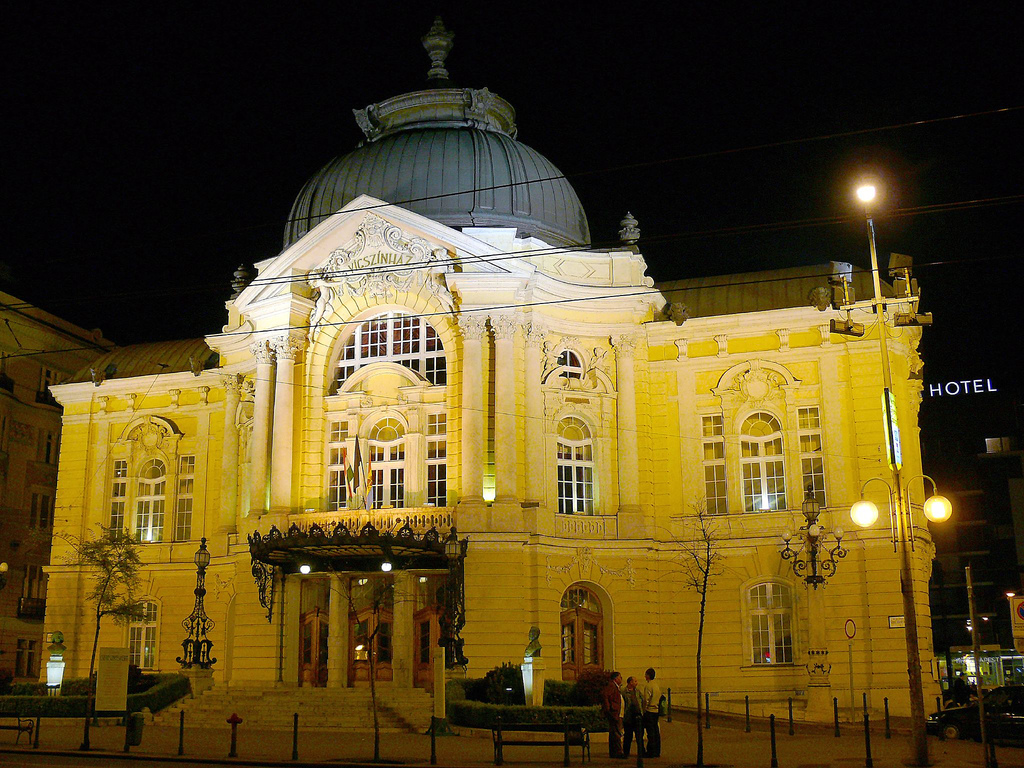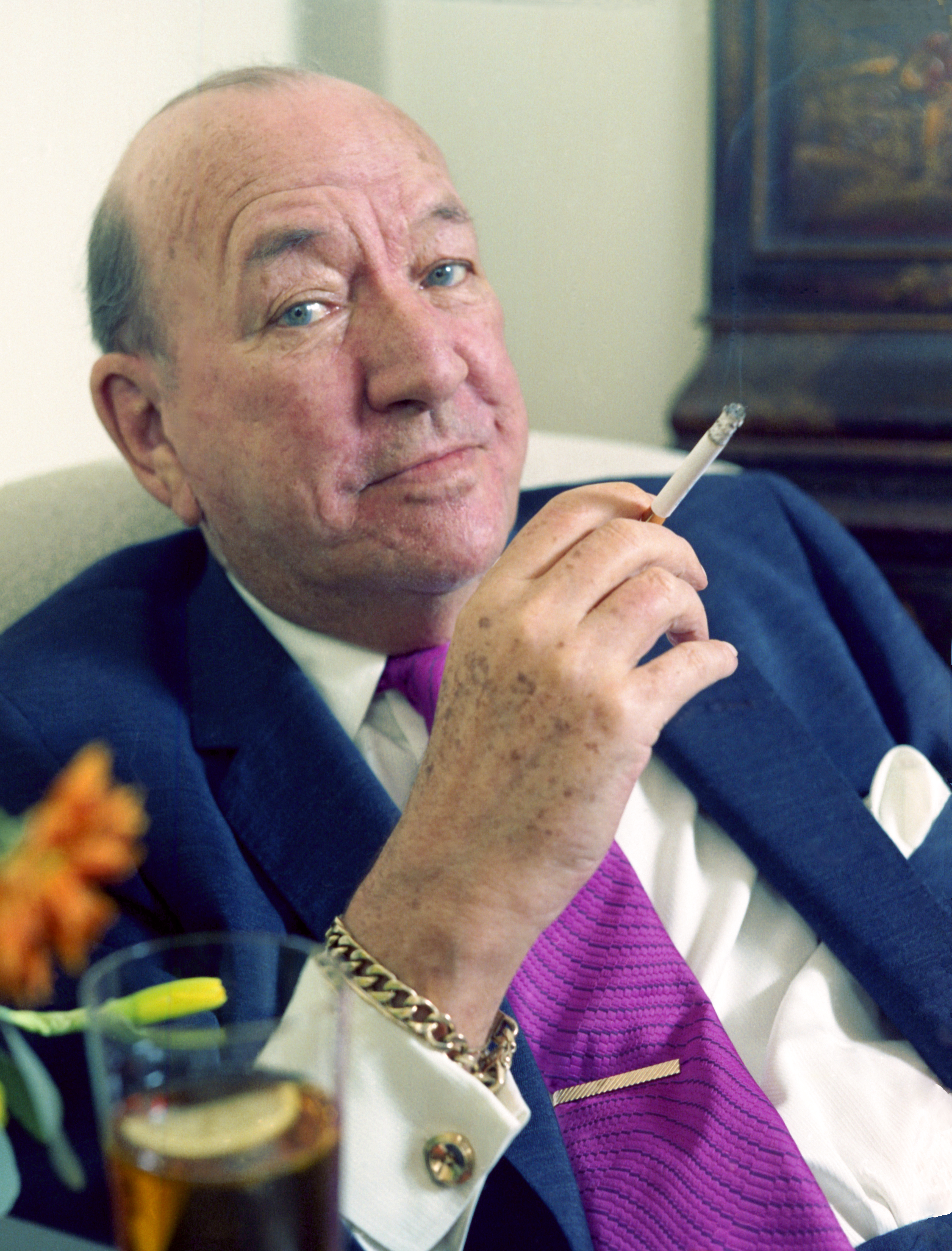|
Teri NĂ¡ray
Teri NĂ¡ray (born TerĂ©z NĂ¡ray; 20 September 1916 - 21 April 1995) was a Hungarian actress. She began a long career on stage at the TerĂ©zkörĂºti Theatre in 1936 and joined the Comedy Theatre of Budapest (VĂgszĂnhĂ¡z) in Budapest 2 years later. From 1951 to 1957 she was an actress at the Youth Theatre, after which she was at the Attila JĂ³zsef Theatre until 1972. Among her notable stage roles were Marion in J. B. Priestley's ''The Linden Tree'', Almina Clare in NoĂ«l Coward's '' Waiting in the Wings'' and DonĂ¡tffynĂ© in Ede Szigligeti Ede Szigligeti (8 March 181419 January 1878) was a Hungary, Hungarian dramatist. He was born JĂ³zsef SzathmĂ¡ry, at Oradea, NagyvĂ¡rad-Olaszi (presently Oradea, Romania). His parents would have made him a priest; he wanted to be a great doctor; ...'s ''Fenn az ernyÅ‘, nincsen kas''. In 1976 she appeared in the TV mini series ''Beszterce ostroma'', and in 1984 she starred in the mini TV series ''KĂ¼lönös hĂ¡zassĂ¡g''. References ... [...More Info...] [...Related Items...] OR: [Wikipedia] [Google] [Baidu] |
OroshĂ¡za
OroshĂ¡za is a city situated in the westernmost part of BĂ©kĂ©s (county), BĂ©kĂ©s county, Hungary, on the BĂ©kĂ©s ridge bordered by the rivers River Maros, Maros and River Körös, Körös. OroshĂ¡za is an important culture, cultural, educational and recreational centre of the region. Main sights The city's main attractions are the OroshĂ¡za-GyopĂ¡rosfĂ¼rdÅ‘ spa complex, the SzĂ¡ntĂ³ KovĂ¡cs JĂ¡nos Museum, the Darvas JĂ³zsef Literary Memorial House, and the Town Art Gallery. The only museum in the country devoted to water wells is found in OroshĂ¡za. At the RĂ¡gyĂ¡nszky Arboretum, more than 2000 plant species in 6000 varieties can be seen. The Lutheran church, was built between 1777 and 1830 in late Baroque style. It is located in the centre of the town. The bell carried by the first settlers, who migrated from Zomba, Hungary, Zomba, is kept in front of the altar of the church. A number of cultural and entertaining programmes are organised in the town every year. Notable re ... [...More Info...] [...Related Items...] OR: [Wikipedia] [Google] [Baidu] |
Austria-Hungary
Austria-Hungary, also referred to as the Austro-Hungarian Empire, the Dual Monarchy or the Habsburg Monarchy, was a multi-national constitutional monarchy in Central Europe#Before World War I, Central Europe between 1867 and 1918. A military and diplomatic alliance, it consisted of two sovereign states with a single monarch who was titled both the Emperor of Austria and the King of Hungary. Austria-Hungary constituted the last phase in the constitutional evolution of the Habsburg monarchy: it was formed with the Austro-Hungarian Compromise of 1867 in the aftermath of the Austro-Prussian War, following wars of independence by Hungary in opposition to Habsburg rule. It was dissolved shortly after Dissolution of Austria-Hungary#Dissolution, Hungary terminated the union with Austria in 1918 at the end of World War 1. One of Europe's major powers, Austria-Hungary was geographically the second-largest country in Europe (after Russian Empire, Russia) and the third-most populous (afte ... [...More Info...] [...Related Items...] OR: [Wikipedia] [Google] [Baidu] |
Budapest
Budapest is the Capital city, capital and List of cities and towns of Hungary, most populous city of Hungary. It is the List of cities in the European Union by population within city limits, tenth-largest city in the European Union by population within city limits and the List of cities and towns on the river Danube, second-largest city on the river Danube. The estimated population of the city in 2025 is 1,782,240. This includes the city's population and surrounding suburban areas, over a land area of about . Budapest, which is both a List of cities and towns of Hungary, city and Counties of Hungary, municipality, forms the centre of the Budapest metropolitan area, which has an area of and a population of 3,019,479. It is a primate city, constituting 33% of the population of Hungary. The history of Budapest began when an early Celts, Celtic settlement transformed into the Ancient Rome, Roman town of Aquincum, the capital of Pannonia Inferior, Lower Pannonia. The Hungarian p ... [...More Info...] [...Related Items...] OR: [Wikipedia] [Google] [Baidu] |
Hungary
Hungary is a landlocked country in Central Europe. Spanning much of the Pannonian Basin, Carpathian Basin, it is bordered by Slovakia to the north, Ukraine to the northeast, Romania to the east and southeast, Serbia to the south, Croatia and Slovenia to the southwest, and Austria to the west. Hungary lies within the drainage basin of the Danube, Danube River and is dominated by great lowland plains. It has a population of 9.6 million, consisting mostly of ethnic Hungarians, Hungarians (Magyars) and a significant Romani people in Hungary, Romani minority. Hungarian language, Hungarian is the Languages of Hungary, official language, and among Languages of Europe, the few in Europe outside the Indo-European languages, Indo-European family. Budapest is the country's capital and List of cities and towns of Hungary, largest city, and the dominant cultural and economic centre. Prior to the foundation of the Hungarian state, various peoples settled in the territory of present-day Hun ... [...More Info...] [...Related Items...] OR: [Wikipedia] [Google] [Baidu] |
Comedy Theatre Of Budapest
The Comedy Theatre of Budapest () is a theatre in Budapest. Starting in the late 19th century as an opposition to the conservative National Theatre, it became a pioneer institution of Hungarian drama, and one of the oldest theatres of the city still in operation. The building The VĂgszĂnhĂ¡z was designed by architects Ferdinand Fellner and Hermann Helmer who worked on over 47 state-of-the-art theatre buildings around Europe. Its construction was financed by the tripartite ownership consisting of Count IstvĂ¡n Keglevich, the writer Ferenc SzĂ©csi, and local businessman GĂ¡bor Faludi. The destined area was a swampland before, but in the next few years it developed into the bourgeois LipĂ³tvĂ¡ros district. The construction started in 1895 and lasted for one year, finishing on 1 May 1896. With 3 main tracts: the stage, including the flies; the lower seating tract; and the entry hall; the building exemplifies late historicism, featuring large sizes, an elevated driveway and baroq ... [...More Info...] [...Related Items...] OR: [Wikipedia] [Google] [Baidu] |
Attila JĂ³zsef Theatre
Attila ( or ; ), frequently called Attila the Hun, was the ruler of the Huns from 434 until his death in early 453. He was also the leader of an empire consisting of Huns, Ostrogoths, Alans, and Gepids, among others, in Central and Eastern Europe. As nephews to Rugila, Attila and his elder brother Bleda succeeded him to the throne in 435, ruling jointly until the death of Bleda in 445. During his reign, Attila was one of the most feared enemies of the Western and Eastern Roman Empires. He crossed the Danube twice and plundered the Balkans but was unable to take Constantinople. In 441, he led an invasion of the Eastern Roman (Byzantine) Empire, the success of which emboldened him to invade the West. He also attempted to conquer Roman Gaul (modern France), crossing the Rhine in 451 and marching as far as Aurelianum (Orléans), before being stopped in the Battle of the Catalaunian Plains. He subsequently invaded Italy, devastating the northern provinces, but was unable to ... [...More Info...] [...Related Items...] OR: [Wikipedia] [Google] [Baidu] |
The Linden Tree
''The Linden Tree'' is a 1947 play by the English dramatist J. B. Priestley. It was first produced at the Duchess Theatre, London on 15 August 1947 and ran for 422 performances."Duchess Theatre", ''The Times'' 16 August 1947, p. 6''The Linden Tree'' J B Priestley Society. Retrieved 26 November 2017 The play had a brief run on in March 1948, lasting only seven performances, in a production directed by , using costumes designed by |
Noël Coward
Sir Noël Peirce Coward (16 December 189926 March 1973) was an English playwright, composer, director, actor, and singer, known for his wit, flamboyance, and what ''Time (magazine), Time'' called "a sense of personal style, a combination of cheek and chic, pose and poise"."Noel Coward at 70" ''Time'', 26 December 1969, p. 46 Coward attended a dance academy in London as a child, making his professional stage début at the age of eleven. As a teenager he was introduced into the high society in which most of his plays would be set. Coward achieved enduring success as a playwright, publishing more than 50 plays from his teens onwards. Many of his works, such as ''Hay Fever (play), Hay Fever'', ''Private Lives'', ''Design for Living'', ''Pr ... [...More Info...] [...Related Items...] OR: [Wikipedia] [Google] [Baidu] |
Waiting In The Wings (play)
''Waiting in the Wings'' is a play by Noël Coward. Set in a retirement home for actresses, it focuses on a feud between residents Lotta Bainbridge and May Davenport, who once both loved the same man. Background ''Waiting in the Wings'' was Coward's fiftieth play.Simon, John"Waiting in the Wings" ''The NY Magazine'', 3 January 2000 It premiered in Dublin on 8 August 1960 at the Olympia Theatre, and in the West End at the Duke of York's Theatre on 7 September 1960. It was directed by Margaret Webster and starred Sybil Thorndike, Lewis Casson, Marie Lohr and Graham Payn.Morley, Sheridan. Introduction (unnumbered page) to Coward: Plays, Five. Methuen, 1994, Binkie Beaumont, who usually presented Coward's plays in London, turned it down as "old fashioned". Michael Redgrave put together "a starry cast led by... an amazing gathering of old actresses, many of whom had been stars when Noel was just starting out." Coward later wrote that in the pre-London tour to Dublin, Liverpool and ... [...More Info...] [...Related Items...] OR: [Wikipedia] [Google] [Baidu] |



